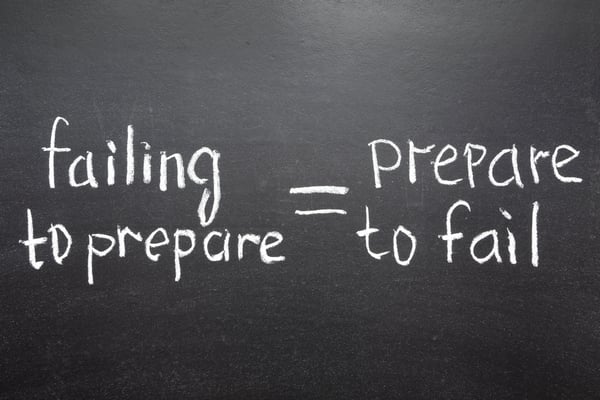4 Reasons Your B2B PR Strategy Might Not Be Working
Sep 16, 2020 / By Kelsey Dielman
Time and again, we see companies frustrated with their PR efforts; they can’t see “results” or they’re disappointed with them. They want increased engagement with their content. They want to outrank competitors in searches. They want net new leads but aren’t getting many (or any) through media placements.
They want PR to drive sales and can’t understand why their PR efforts aren’t working.
How can you prevent missing the mark when it comes to your company’s B2B PR strategy? Understanding what PR can and can’t do is the starting point. That’s why the initial discussions we have with potential clients start with understanding their expectations about PR. We quickly discover that in many cases, PR isn’t the most significant issue or need. It’s a lack of message clarity and a well-defined strategy in which PR is one part of the communications mix, but not always the driver.
If your company is struggling to achieve successful B2B PR outcomes, it’s time to re-think your approach.
1. It’s unfocused
Your B2B brand is specialized. Your PR strategy should be specialized, too. Understand your target audience so you can cater to their pain points. Your customers are also people, so it’s essential to identify what makes them unique. Where do they spend time, on and offline? What trade and business publications do they read and trust? What other information influences their discovery and decision patterns? What help do they need and how can your company help them?
It can take time to understand industry buyer personas. Learning specific terms, identifying buyer pain points, and mastering the nuances of an industry is a lengthy process, but it has exponential benefits.
Pro tip: You can spend all that time learning until you develop solutions that work, or you can work with a specialist agency that already knows your industry. This way, there’s less time to market on your efforts, meaning faster results.
2. It’s not leveraging industry connections
Not leveraging industry connections goes hand-in-hand with not having proper industry knowledge; having the right connections (think trade publication reporters) makes your efforts more successful. Without relevant media contacts, it will take longer for content like company announcements, time-sensitive press releases, product introductions, etc. to get to the right channels.
If you know which publications to target, you’re meeting your prospects where they already are. And having an established connection with the publication gets you a foot in the door. This allows content to get to the right audience without wasted time.
Keep establishing these connections by following the publications and reporters online. This is a great way to interact with media on a more personal level, and when you go to make a pitch, the reporter would remember your insightful comments or past interactions with their articles and social media posts.
Just as with understanding your industry, gaining contacts requires patience and effort, with worthwhile payoff. You can save some time and headache by working with an agency that’s already done the heavy lifting of research and networking.
3. It’s too traditional
Let’s be clear that the word traditional is not a synonym for bad. Just different. Traditional PR focuses on news media, and buyers are getting their information from so many more niche news outlets today. Although there is, of course, a place for landing media coverage in broader business publications, those outlets aren’t likely to drive leads or support sales enablement strategies. They’re also very hard to attribute and measure.
Successful PR strategies should also incorporate digital and inbound marketing tactics aimed to reaching your buyers more directly. This includes paid social media, buyer education content on your website, sales cadences that include email and LinkedIn messages, and digital activities that can be tracked and measured.
Which brings me to my next point on digital…
4. It’s not digital-minded
Digital targeting can directly impact your PR efforts. You can land the greatest publication in your industry and still struggle seeing results if that’s all you do. You need to have clear messaging on your website, a targeted and consistent content strategy, and relevant social media content in addition to excellent media coverage.
For example, LinkedIn is one of the most significant sources of B2B leads. In fact, “93% of B2B marketers consider LinkedIn to be the most effective platform for lead generation. And LinkedIn generates more leads for B2B companies than Facebook, Twitter, or blogging.”
Here are some considerations to make when updating your website, blog content, and social copy:
- Is it clear? Have you left out the industry or internal jargon?
- Is it buyer-focused? Is the messaging solving for your target audience’s pain points?
- Is it engaging? Do you encourage interaction on blogs, LinkedIn posts, and other forms?
- Is it complementary? Do your website and social content work together to form a unified content strategy?
- Is it consistent? Do you keep the same voice on all channels?
- Is it optimized? Are you leveraging engaging copy with SEO best practices?
Now that we’ve talked about what B2B PR efforts aren’t working, let’s take a look at how they should work.
Vanessa Horwell, ThinkInk’s chief strategy officer, was at an airline conference (back when companies still attended them in the before times) talking about the importance of specialization and industry knowledge when it comes to choosing your PR and communications partner.
Watch the short video here:
With results like these, we think a strategic partnership is the only way. If you’re ready to level up your B2B PR strategy, we’re ready to chat.
Sign up for our insights on the convergence of business and PR




